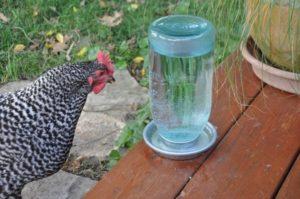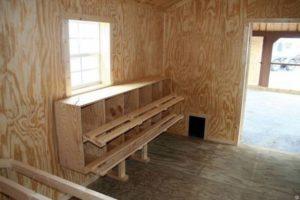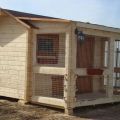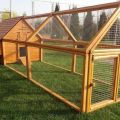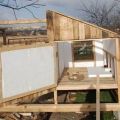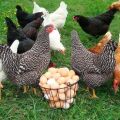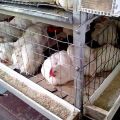Step-by-step instructions for building a chicken coop with your own hands, drawings and dimensions
Keeping chickens is a difficult process. One of the problems that poultry farmers always face is the choice of location. Building a suitable chicken coop is necessary not only for winter; in summer, birds also need a comfortable home. Therefore, if you just put them in a shed, you are unlikely to achieve good egg production. It is important to consider lighting, temperature conditions, ventilation.
Basic requirements for a chicken coop
The requirements for the poultry house directly depend on whether you will keep broilers or layers there, as well as on the season. There are also some general rules:
- The building should serve as a reliable protection from predators and small rodents.
- Chickens catch colds easily, so avoid drafts.
- Ventilation is also necessary - stuffiness negatively affects birds.
- Don't forget the lighting. Chickens are daytime birds, in a dark room they reduce activity, gain weight poorly and rush.
- The distance to residential buildings is at least 3 meters.
- It is important to keep the chickens calm and quiet.
Summer chicken coop
In summer versions of chicken coops, broilers are most often populated. For meat breeds, house size is usually determined at 3 chickens per square meter. In the case of laying hens, this number increases to 4 birds. The building itself needs to be built on a hill so that it is not flooded by water during rains.
Winter construction
With a properly constructed chicken house, fresh eggs can be obtained all year round. However, in winter, birds need adequate heating, they need more light. The vestibule is important, thanks to which less cold air will get into the chicken coop when a person enters there.
The winter coop should also be located in a high enough place to keep out melt water.
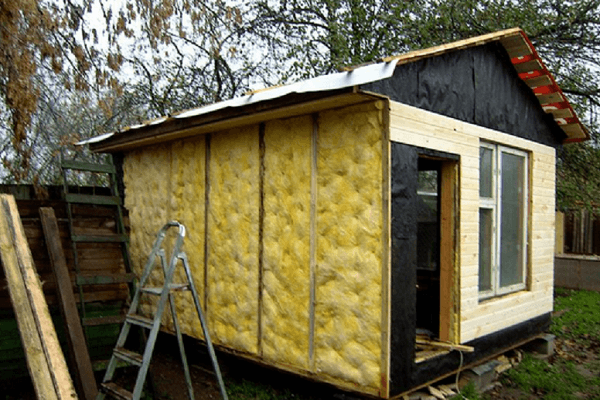
Drawings and projects
The chicken coop should not be made too cramped - it is necessary that the chickens can move freely there. This will increase their egg production. Usually built at the rate of 2-3 birds per 1 square meter. Also, on the site next to the building, you need to equip a walking area, covered with a netting. Protection from wind, direct sunlight and rain is also important. The location of such a site and the exit to it from the south side is ideal.
You also need to adhere to the following rules for a chicken coop for 10 chickens:
- maximum 4 slots;
- feeders - along the wall, opposite the perches;
- the chicken coop should be built so that it can be easily cleaned and fed;
- the floor is smooth but not slippery;
- drinker and feeder - at a height of at least 50 millimeters;
- the perch is attached at a height of 60 centimeters;
- the area of the windows should not exceed 10% of the floor area;
- the presence of a ladder outside.
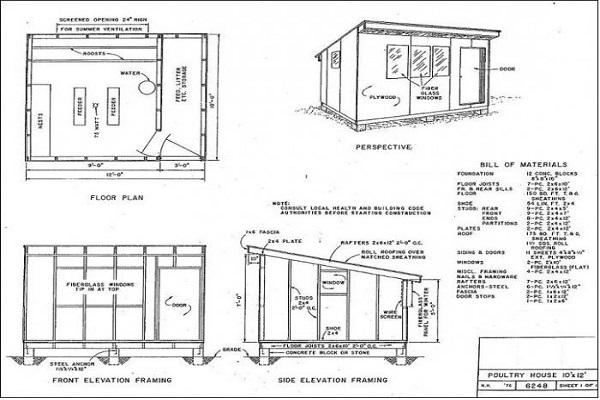
Also, according to building codes, the chicken coop should be located at a distance of at least 4 meters from the border of the territory. The laz from the hen house is made from the west or east side, and the windows are from the south to give more light. Most often, a frame poultry house is made as the most economical and easy to build.
Suitable building materials
Different materials are suitable for a chicken coop, but most often foam blocks, brick and wood are used. They have the following pros and cons:
- Foam blocks are convenient for construction and reliable, but usually expensive.
- A more economical option is a brick house, but additional insulation is needed.
- The wood chicken coop fits well into the countryside, is comfortable and environmentally friendly. Requires compliance with fire safety.
Often buildings for chickens are made from various materials at hand to save money.
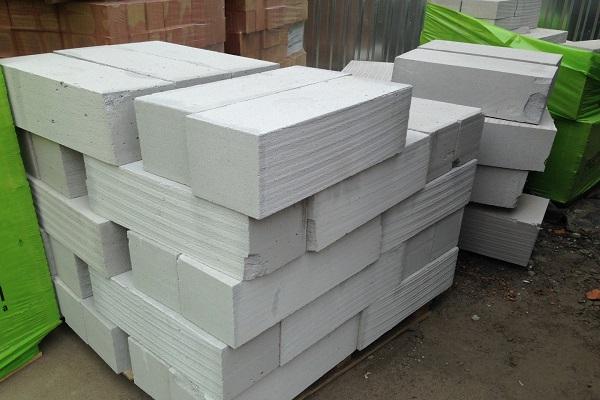
How to build a house with your own hands
The construction of even a small chicken coop consists of several stages. Step-by-step instructions include design, construction of a foundation, walls, roofing, flooring, then internal elements and insulation are added. This is not the easiest thing to do, and you need to clearly follow the scheme.
Foundation construction
There are three types of foundation:
- tape;
- pile;
- columnar.
The choice of species depends on the size of the coop, as it affects the weight, and on the stability of the soil. If it is unstable, it makes sense to build a tape, but in other cases it will be too expensive.

Most often used columnar. Its construction consists of the following stages:
- marking the place and placing pegs at the corners;
- then remove a layer of soil 20-30 centimeters thick;
- make holes for the pillars, depth - half a meter;
- dig out the pillars, cement stones and bricks;
- after setting the mortar, after a few days, cover the posts with bitumen;
- pour rubble or gravel into the space between the pillars;
- fasten the lower support beams to the posts.
Pillars are usually located every meter and a half along the perimeter of the chicken coop.
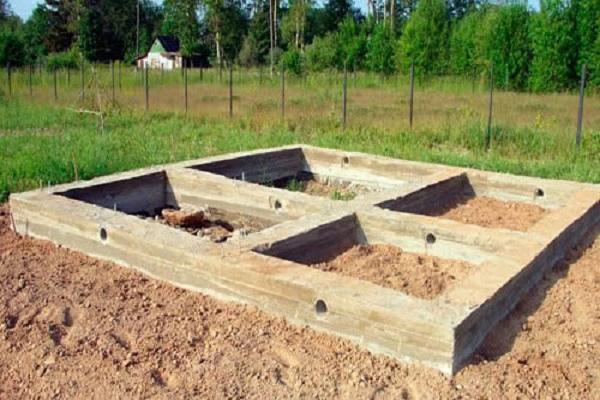
Chicken coop floor
For broilers, the floor is usually made light, but laying hens, which are kept in winter, require insulation. But, in any case, the structure should consist of two layers. You need to build the floor as follows:
- Place the beams on the finished support frame.
- Make the next layer from the boards.
- Place insulation on top, such as mineral wool.
- Lay the finishing boards last.
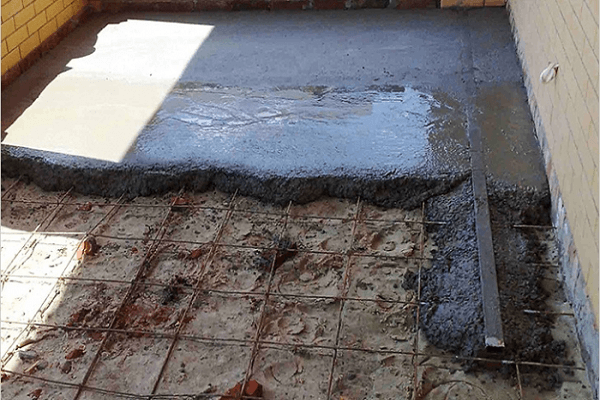
Building walls
The main thing to consider when building walls is that they must be thick enough to keep warm. Choose the material focusing on the frame. If it is strong enough, tape or slab, then you can take a cinder block, brick or foam block. But in this case, additional insulation will be required.
Light wooden walls are usually set up on a columnar frame. First, load-bearing beams are attached from four sides, then horizontal beams are attached from above. Outside, the chicken coop is sheathed with boards, taking into account the entrance and windows.
The construction of adobe walls is popular. For this, bricks are molded from clay and straw, from which the walls are laid. This material retains heat well, it is environmentally friendly. However, it will take a long time to grind.
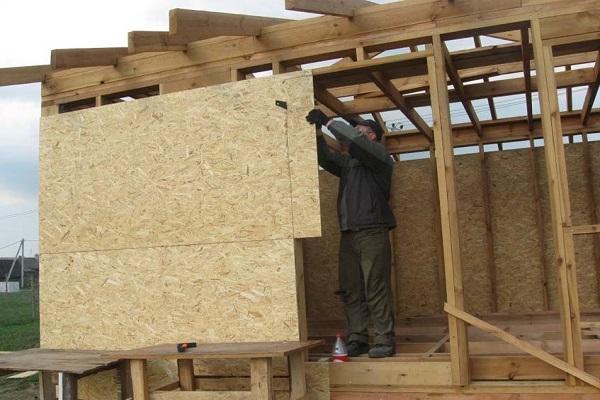
How to insulate a chicken coop
The most economical and convenient option would be to insulate the house with mineral wool. It is laid after the outer sheathing is ready:
- Leave a space of about 15 centimeters (across the width of the timber) between the next layer of sheathing.
- Place two layers of cotton wool between the supporting beams and secure with staples or construction harnesses.
- Place a shielding roll or foil on top.
Next, you need to sheathe the walls with internal boards, their width is at least 12 centimeters.
Ventilation
In summer, doors are usually opened for ventilation, but in winter this process must be strictly regulated. Without ventilation, harmful ammonia fumes from chicken droppings accumulate in the hen house, walls can rot. Stuffiness also hurts chickens.
There are usually two types of ventilation:
- natural - holes with doors are made on opposite walls;
- forced - fans are inserted into the holes, which can also be completely closed.
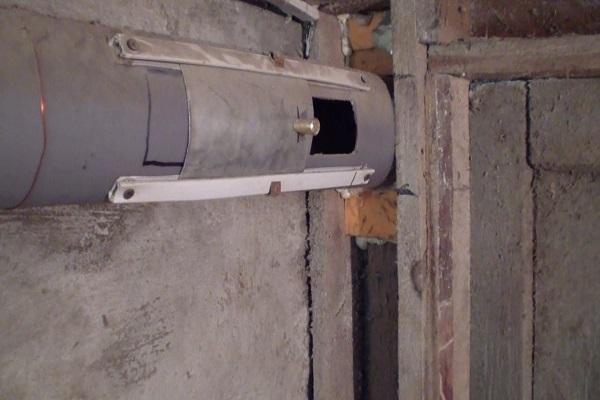
Lighting
For better egg production, you need to provide long daylight hours for chickens - 16-18 hours. For proper lighting, first of all, windows are needed on the southern and southeastern sides of the chicken coop. Also install a 30-40 watt lamp, always with a shade. It should light up feeders, perches, drinkers, but in no case - not nests.
Additional heating
The comfortable temperature for chickens is 15 degrees Celsius, in winter - at least 10 degrees. Therefore, artificial heating is required. The most commonly used electric convectors. They consume little energy and are not hazardous to operate. Usually two convectors are installed. One works constantly, the timer of the other can be set to work at night.

Internal arrangement of the chicken coop
The following elements must also be placed in the house itself:
- nests - in the back of the room, for the calmness of the birds;
- roosts - their cross-section should not exceed 25 millimeters so that chickens can comfortably wrap their paws around them;
- feeder;
- drinker;
- dishes with sifted ash for bathing and getting rid of parasites (sometimes sand is added).
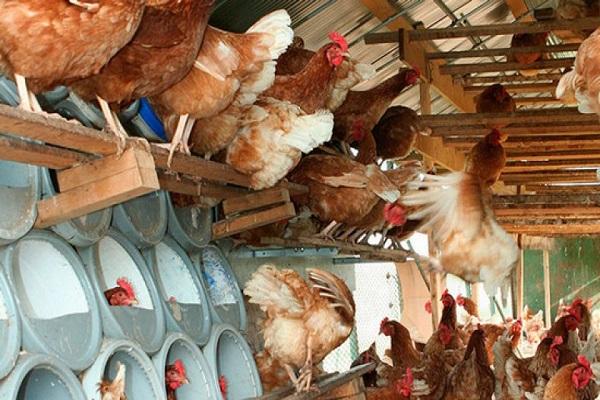
Features of chicken coops in the cellar
The poultry house can also be equipped in the cellar, if it is not possible to make an insulated chicken coop. Keeping chickens there is little different from other methods. But there are several nuances:
- You will have to equip a bedding of sawdust or hay, which needs to be changed once a week or more often.
- Lighting is important to give the chickens the correct daylight hours.
- Insulate the walls with a roll heat insulator, its thickness should not be less than 5 centimeters.
- It is necessary to ventilate the basement, also equip ventilation with air vents.
Considering all these features, then you can build a comfortable, warm chicken coop. Under suitable conditions, birds will fly all year round.
Adequate room for broilers is also necessary, even if you are only going to grow them in the summer.
